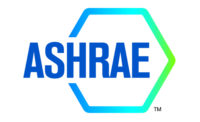Also approved for review was addendum i. The public review dates will be announced later this fall. Addendum g proposes to completely revise the lighting requirements based on the latest technology and techniques. The revisions incorporate recent research on fluorescent fixture light loss factors and space type characteristics of new commercial construction, as well as revised lighting level recommendations as published in the IESNA Lighting Handbook Ninth edition, according to Eric Richman, chair of the 90.1 lighting subcommittee.
The new lighting requirements could mean an estimated 29% decrease in the power used for lighting in buildings with lighting designs that now only meet just the current standard requirement. In terms of total building energy use, this could be a reduction of around 6% for all energy used in commercial buildings across the country.
The research is based on a review that covered all model inputs and applied current knowledge of lighting principles, design applications, and efficient equipment availability. "Many designers already are beating the lighting energy requirements in the standard," Richman said. "This addendum will help eliminate remaining inefficient lighting design practices and encourage all designers to become more energy efficient."
Addendum i proposes to increase the energy efficiency of small three-phase air-conditioning units to match the efficiency recently adopted by the U.S. Department of Energy (DOE) for single-phase units. The DOE rule sets efficiency standards for single-phase air-cooled air conditioners and heat pumps at a Seasonal Energy Efficiency Ratio (SEER) rating of 12.0 for both split and single package systems and an HSPF of 7.4 for both single-package and split-system heat pumps.
The 90.1 committee proposes the adoption of a 12 SEER level for 3-phase air cooled unitary air conditioners and heat pumps smaller than 65,0000 Btu/h capacity, with an additional 7.4 HSPF level for such heat pumps, according to Jerry White, chair of the committee. The proposed adoption date for the new requirements under Standard 90.1 is Jan. 23, 2006, to coincide with the effective date mandated in the DOE rule for single-phase central air conditioner products.
Drafts of ASHRAE's proposed addenda are available only during their public review periods. To obtain electronic draft versions of the ASHRAE 90.1-2001 addenda during the comment period, log on to ASHRAE Online at www.ashrae.org/STANDARDS/pubrevdft.htm.




